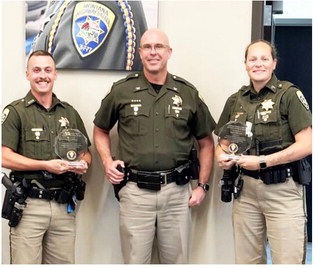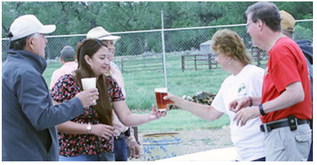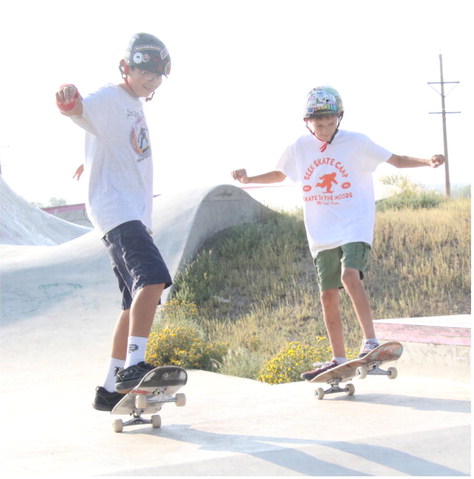American Prairie Establishes National Discovery Center
Even as American Prairie continues to be the target of Montana leaders who worry about the land conservation organization that has reintroduced bison herds to parts of central Montana, those same adversaries have stayed mum on the transformation of a downtown block that has become a national visitors’ center and interactive museum dedicated to the state’s last, best prairies.
Lewistown prides itself on being the geographic center of the state. But in addition to being the center, the midsized Montana town reflects so many aspects of the Treasure State, including snowcapped mountains that surround the some of the best ranching land in the state.
American Prairie, formerly known as the “American Prairie Reserve” has staked its position in the community, converting a former Main Street department store into an interactive museum and community center. The lettering for the museum is subtle and the center blends into the restaurants and retail shops that surround it. Lewistown’s Main Street is still vibrant and bustling with a mix of retail and professional services. But in the heart of Montana ranching territory, the organization is determined to prove it’s not a bunch of out-of-state environmentalists. Instead, it’s an organization that sees Montana’s future tied to two unchanging truths: Folks will come from all over to see the big skies and wide open prairies. And without efforts to conserve the land, the entire state may be in trouble.
American Prairie’s mission plays out on several fronts – from the herds of bison north of Lewistown in Phillips County to the public battles the organization has had to fight against Gov. Greg Gianforte and Attorney General Austin Knudsen. Both men are Republicans and both have taken hostile stances against the organization, which takes private donations and philanthropy and buys land for conservation as well as hunting, grazing and tourism. Despite never visiting the organization, Knudsen and Gianforte have been on a public campaign against it for what they perceive as threatening the state’s agriculture community. Though they used to be more common, signs around Fergus County still read, “Save the Cowboy, Stop the American Prairie Reserve.”
Instead of engaging in a battle of press releases and rallies, American Prairie has taken a different approach. It hasn’t ignored the criticism of public officials, but it has continued to develop its mission and outreach, playing a long game that led to the culmination of the discovery center — a tourist attraction meant to boost the local economy by promoting the idea that visitors can come see prairie lands that have not been plowed under.
Inside a small theater, visitors can learn about the bison, the other animals on the prairie and efforts to preserve and study the landscape that has disappeared across the West.
“People think the prairie is flat, but there’s so much different land,” said museum executive director David Cunningham.
The museum is open from Thursday through Saturday with plans to expand. Many of the activities focus on children’s education.
From frogs and snakes to feeling the wooly hide of a bison, Cunningham said the discovery center focuses on younger children intentionally.
“We want to emphasize that everything is part of what happened on the prairie. We want them to know that what they do is part of the landscape and will continue to shape it,” Cunningham said. “We can educate them, and they can have so much fun. That will give them an appreciation for it. It belongs to them, and they will be its future.”
A display about bison and their behavior tracks the bison herds of American Prairie in real time. It shows how far they range, and it helps illustrate that bison, like most wild animals, look for or stay near water.
Ultimately, American Prairie hopes that visitors use the discovery in conjunction with visiting the prairie lands. The organization has opened thousands of acres to public access for roaming, hiking, hunting and fishing. It has also built yurts and other camping areas so that families could actually experience the prairies.
“They need to see that it’s physical and tangible,” said Anna Schale, National Discovery Center coordintor.
Where some may look at a prairie dog and see a rodent, Cunningham said he hopes activity at the discovery center will help visitors understand the ecological purpose of the animals.
“Sometimes they don’t see the diversity. It’s like a desert. There’s so much life you don’t see unless you look,” he said.
A large conference area isn’t just available for education or American Prairie meetings, but officials hope it becomes a meeting room and gathering place for the community. The erstwhile department store still has a few features from its former life, including a walk-in vault that was built in to protect cash and other valuables, like furs or jewelry.
Cunningham hopes that visitors to the center become living examples of what George Horse Capture, Jr., a Nakoda elder said about the prairie: That people come to the prairie and find something they didn’t even know they were looking for.


